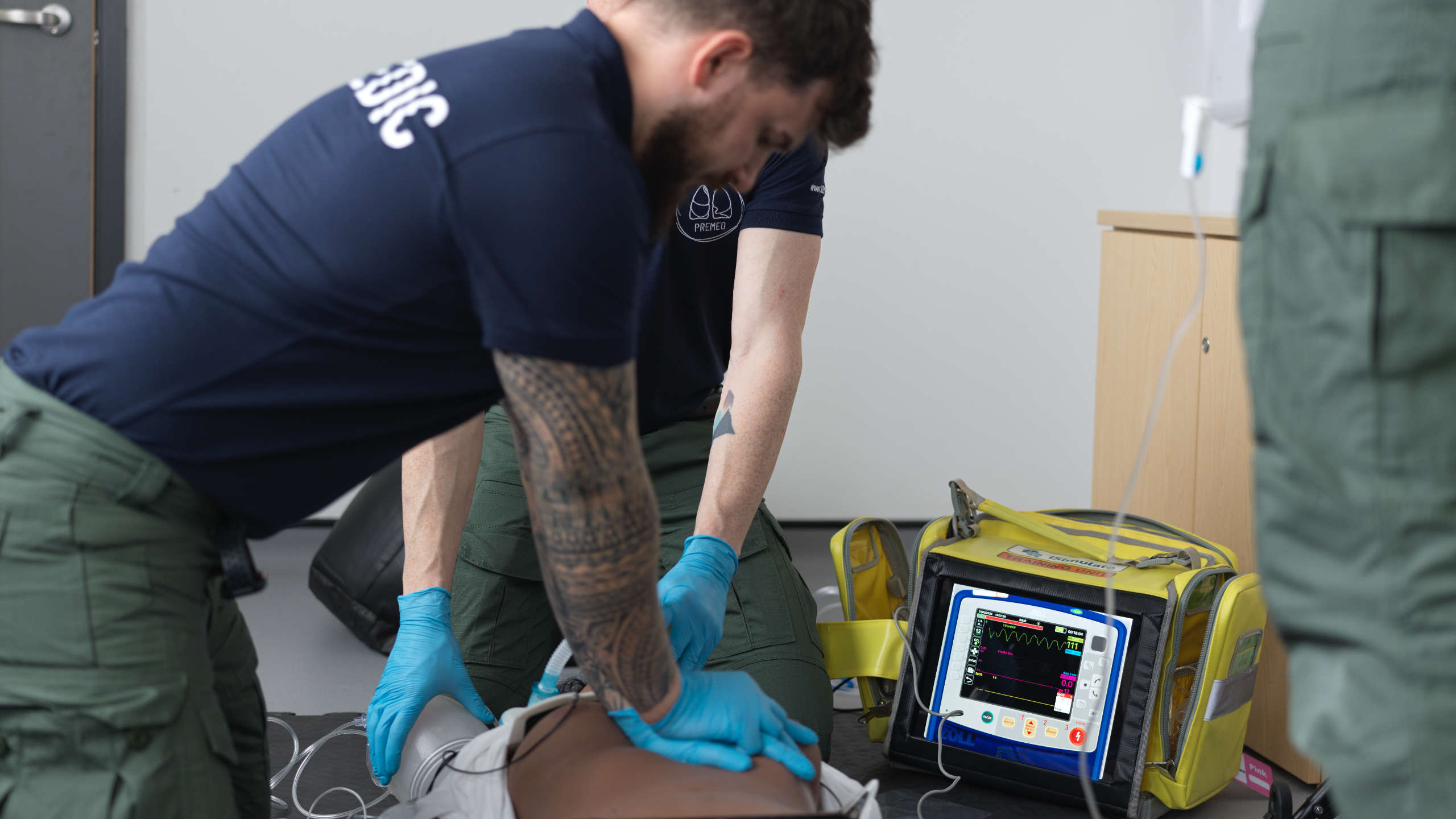
Medical Cardiac Arrest
Pre-hospital CareUse this resource in conjunction with your real-world training

Experience Summary
In this 360-degree video, observe the pre-hospital team assess and manage an unconscious patient who goes into cardiac arrest.
The assessment and management of an unconscious patient in an out-of-hospital setting is a critical situation requiring prompt action guided by Advanced Life Support (ALS) principles. The primary aim is to preserve life, maintain vital organ perfusion, and identify reversible causes until advanced care is available.
Clinical Context
ALS begins with an immediate assessment of safety—ensuring the environment is safe for the responder and patient. Once safe, the responder should assess the patient’s level of consciousness using the AVPU scale (Alert, responds to Voice, responds to Pain, Unresponsive). If the patient is unresponsive, the DRS ABCD approach is used:
- D – Danger: Check for hazards to yourself, bystanders, and the patient.
- R – Response: Assess the patient’s response to voice or pain.
- S – Send for help: Call emergency services immediately or instruct someone nearby to do so.
- A – Airway: Open the airway using a head tilt–chin lift or jaw thrust (if trauma is suspected). Check for visible obstructions and clear them if safe to do so.
- B – Breathing: Look, listen, and feel for normal breathing for up to 10 seconds. If the patient is not breathing normally or only gasping, start CPR.
- C – Circulation: If there are no signs of circulation (no pulse, unresponsive, not breathing), begin chest compressions at a rate of 100–120 per minute, with a 30:2 ratio of compressions to breaths.
- D – Defibrillation: Attach an Automated External Defibrillator (AED) as soon as available. Follow voice prompts and deliver shocks if advised.
ALS also involves considering the reversible causes of unconsciousness, often remembered using the “4 Hs and 4 Ts”:
- Hypoxia, Hypovolaemia, Hypo/hyperkalemia (and other metabolic issues), Hypothermia
- Tension pneumothorax, Tamponade (cardiac), Toxins, Thrombosis (cardiac or pulmonary)
If a pulse is present and the patient is breathing inadequately, provide rescue breaths using a bag-valve-mask with supplemental oxygen if available. Continuous monitoring and reassessment are vital.
ALS emphasizes effective communication, use of structured handovers (e.g., SBAR), and timely handover to emergency medical services upon their arrival. Early intervention with high-quality CPR, defibrillation, and management of reversible causes significantly improves survival and neurological outcomes.
Learning Outcomes
- Observe the steps taken to assess an unresponsive patient.
- Understand how to make a diagnosis of cardiac arrest.
- Understand when to perform cardiopulmonary resuscitation (CPR) as per Advanced Life Support guidance.
External Resources
